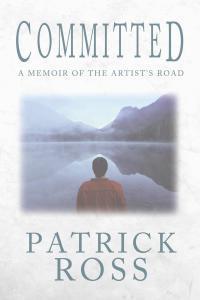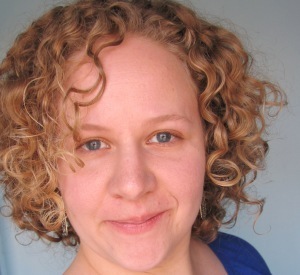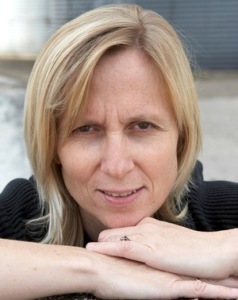Riley Adams's Blog, page 127
November 2, 2014
Allowing Your Book to Be True to Itself
by Patrick Ross, @PatrickRWrites
“The author has certainly gone on an interesting journey, but I’m afraid the tone is too journalistic for our list. I’m looking for more literary and personal accounts of creativity and personal growth.”
That was a rejection my literary agent received on June 2, 2011, to our proposal for The Artist’s Road, a yet-to-be-written nonfiction work that we pitched as a craft book. It would focus on creative lessons I learned from artists I interviewed on a cross-country U.S. road trip for a documentary video series. My encounters with those artists and their authentic approaches to living an art-committed life had transformed me; part of that transformation was a compulsion to write the story of my trip. Yet my background was journalism; I wrote about others, not myself, and the book proposal reflected that.
Three weeks after that rejection I found myself in Montpelier, Vermont, at my first residency in an MFA in Writing program. Eleven classmates and two instructors workshopped my submission, a proposed chapter of the book. It contained an interview with a compelling printmaker named Sabra Field, lessons Sabra had to offer on her own creative process, and some humorous anecdotes of life on the road. Everyone in the workshop had the same reaction. They told me how well I had captured both Sabra and the location, just as a journalist should. But they also told me one thing was missing: the narrator.
“If we’re going to travel across the country with you, Patrick, we want you in the story,” one classmate said.
What I came to realize that June was that my book wanted to be a memoir. The problem was that I was not a memoirist. I could have abandoned the project entirely. But I had just begun an MFA program to grow as a writer, so I took a leap of faith and began writing the book anew, with the guidance of Vermont College of Fine Arts instructors. I made them earn their pay; I proved remarkably resistant to putting myself on the page.
Two years later, however, I had a complete rough draft of an actual memoir, which told in raw and honest prose why I had been so obsessed with artists and the creative process; I had turned away from my own creativity out of fear of a downward spiral as someone with bipolar disorder. I feared modeling behavior I had witnessed growing up in a household ruled by mental illness.
Three years after that original rejection, the book–rechristened Committed: A Memoir of the Artist’s Road–had found a publisher. Now it’s out in print and I stand exposed to the world, my flaws and mistakes visible to anyone willing to purchase or borrow a copy. Fortunately I’ve had a lot of time to get used to that idea.
Michelangelo believed that when he sculpted, he was merely liberating art that was already hiding inside the stone. I have come to believe that Committed existed all along. It just took me several years to liberate it from the layers of resistance and denial I had placed around it. In the book I write about my admiration of those living authentic lives; I learned to be authentic to what Committed needed to be in order to write it, and to see it published.
As it happens, Committed still contains lessons on creativity from the artists I interviewed. One from award-winning science fiction author Michael Swanwick resonated with me while writing Committed. Let me quote from the book:
I haven’t read any of Michael’s books, although I had intended to before I became buried in video editing. I ask Michael to explain his fiction as much for my benefit as for the video’s viewers. He says he writes all types of fantasy and science fiction. He’d make more money if he stuck to one genre, but then again, he says, he’d make more money as an accountant. He likes being a full-time writer, which gives him the freedom to write whatever he wants. Doing so means he doesn’t always choose the most lucrative publication path. “It is, however, the most satisfying way to spend your life.”
Michael has learned to write each book the way that story wants to be told. He may be right in saying he could make more as an accountant. But he is a successful, full-time author because his books, when written the way they want to be told, are compelling, and thus are published.
One thing I learned on my cross-country road trip, and the writing process that followed, is that when we meet resistance in life it is easy to push back. Sometimes, however, we should stop to listen.
Patrick Ross is an award-winning journalist,
creative writer, and blogger. His first  book, Committed: A Memoir of the Artist’s Road, was published in October 2014 by Black Rose Writing. He blogs on creativity, writing, and living an art-committed life, and teaches creative writing with The Writer’s Center in Bethesda, Maryland, and online with The Loft Literary Center. He lives in Alexandria, Virginia, with his wife and teenage son, and wonders constantly what his daughter is up to six hundred miles away at art school. Learn more at patrick-ross.com.
book, Committed: A Memoir of the Artist’s Road, was published in October 2014 by Black Rose Writing. He blogs on creativity, writing, and living an art-committed life, and teaches creative writing with The Writer’s Center in Bethesda, Maryland, and online with The Loft Literary Center. He lives in Alexandria, Virginia, with his wife and teenage son, and wonders constantly what his daughter is up to six hundred miles away at art school. Learn more at patrick-ross.com.
Amazon: http://bit.ly/rossamazon
The post Allowing Your Book to Be True to Itself appeared first on Elizabeth Spann Craig.
November 1, 2014
Twitterific Writing Links
by Elizabeth S. Craig, @elizabethscraig

Twitterific writing links are fed into the Writer’s Knowledge Base search engine (developed by writer and software engineer Mike Fleming) which has over 23,000 free articles on writing related topics. It’s the search engine for writers.
Pre-NaNoWriMo Tips http://ow.ly/DhEce @ava_jae
NaNoWriMo: Planning Your Novel’s Middle: http://ow.ly/DhE4p @janice_hardy
How free book promos, a pen name, and audiobooks have worked out for one hybrid writer: http://ow.ly/DC2A1 @jimhbs
3 Steps to Pre-Plot for NaNoWriMo: http://ow.ly/DhDwp @plotwhisperer
What Halloween Can Teach Us About Character Development: http://ow.ly/DAItB @jessicastrawser
Let it get gross, let it get weird, and figure out later how far to take it: http://ow.ly/DAJ0Z @fdelilahfa
The Scariest Moments in a Writer’s Life: http://ow.ly/DAJ9a @womenwriters
Take a Break, Write a Short Story: http://ow.ly/DAJvv
How Writing Horror is like Writing Comedy: http://ow.ly/DAJL7 @HeatherJacksonW
50 Ways to Generate Ideas for NaNoWriMo: http://ow.ly/DALea @YAtopia_blog
Death and the Writer – a Halloween audio story: http://ow.ly/DALss @camillelaguire
Write a Novel (NaNo), Minimize Revisions, & Improve Odds of Finishing AND Publishing: http://ow.ly/DAKZS @kristenlambtx
Using Layers to Pre-Write Your Scenes: http://ow.ly/DAKQW @janice_hardy
An Editor Says Not to Edit During NaNoWriMo: http://ow.ly/DAKIN @epbure
13 plot twists that utterly ruined good horror movies: http://ow.ly/DAKou @EvanHoovler
How to Fast Draft: http://ow.ly/DhGhl @ava_jae
Backstory: The More You Know, The Less Readers Have To: http://ow.ly/DhGho @piperbayard
123 Ideas for Character Flaws: http://ow.ly/DhGhu @writers_write
NaNo: Ready to Start Drafting? http://ow.ly/DhDz0 @jamigold
Guide to Surviving NaNoWriMo: http://ow.ly/DhGhz @BookGeekConfess
Expectation, Event, Reaction: http://ow.ly/DhGhI @plotwhisperer
Positive and negative character traits: http://ow.ly/DhGhP from Clever Girl Helps
How to give your story a purpose: http://ow.ly/DhGhS
Whose Point of View Should We Use? http://ow.ly/DhGhU @jamigold
5 Tips for a Successful NaNoWriMo: http://ow.ly/DhGhX @CDugmoreWrites
The definitive post on word count: http://ow.ly/DhGi3 @Janet_Reid
Clarifying Thoughts: Revising Your Outlines to Make the Writing Easier http://ow.ly/DhGif @janice_hardy
Indie Book Marketing—Early Readers: http://ow.ly/DhOTB @heatherdgilbert
5 Steps To Find Your Book’s Ideal Audience: http://ow.ly/DhOTH @angelaackerman
Tips for handling multiple plot lines: http://ow.ly/DhOTO
The Runner’s Guide to Better Writing: http://ow.ly/DhOTU @writetodone
Have You Orphaned Your Dialogue? http://ow.ly/DhOTW @MarcyKennedy
Little Known Sources for Public Domain Images: http://ow.ly/DhOU1 @HelenSedwick
Sleuths sizing up suspects in crime fiction: http://ow.ly/DAPcH @mkinberg
Literary Halloween Costumes: http://ow.ly/DAJij @ingridsundberg
Chaos and Creative Expression: The Creative Mind: http://ow.ly/DdAdS @psychcentral
Creating a Treatment for Your Book Trailer: http://ow.ly/DdAdQ @byRachelMWilson
7 Deadly Sins of Punctuation And How to Avoid Them http://ow.ly/DdAdO @lifehackorg
Writing vs. Publishing: http://ow.ly/DdAdL @behlerpublish
Monetizing the Business of Writing: http://ow.ly/DdAdF @victoriastrauss
5 Reasons Why It Matters What Your Website Is Called: http://ow.ly/DdAdz @selfpubreview
Remember social bookmarking as a marketing tool: http://ow.ly/DdAdw @bookgal
Studying nonfiction could be the key to creating the best fiction: http://ow.ly/DdAds @statepress @willruof
Is Relatability Important in a Script? http://ow.ly/Ddyiw @heroesareboring
Why you’re a writer (even if you don’t think so) : http://ow.ly/DdAdn @billycoffey
Your Scene Needs a Problem: http://ow.ly/DdAdj @TheKenHughes
15 Lessons from 15 Years of Blogging: http://ow.ly/DdAdd @anildash
8 Reasons to Write Something Right Now: http://ow.ly/D9oUt @ediemelson
Five Misspelled Idioms http://ow.ly/D9oUs @writing_tips
17 Things English Majors Are Tired Of Hearing: http://ow.ly/D9oUp @KirstenKing_ @jmschaff @buzzfeed
20 Fiction Writing Renovations in Simplified Format: http://ow.ly/D9oUo @randysusanmeyer
Is a strong social media presence overrated? http://ow.ly/D9oUn
Does Book Touring Still Matter? http://ow.ly/D9oUm @scalzi
5 Things Literary Writers Can Learn from Sci-Fi Writers: http://ow.ly/D9oUk @manzanitafire
When to Describe a Movement: http://ow.ly/D9oUg
Above the Plot Planner Line: How to Test Pacing and Tension in Stories: http://ow.ly/D9oUd @plotwhisperer
Top 10 health and safety fails in children’s books: http://ow.ly/D9oUc @guardianbooks
Should You Be Using a Pen Name? http://ow.ly/D9oU9 @HelenSedwick
A Closer Look at the 16-24-Year-Old Reader Demographic: http://ow.ly/D9oU6 @Porter_Anderson
Your 10 Point Website Check Up: http://ow.ly/D7cwS @bookgal
How to explain your story without using backstory: http://ow.ly/D7cwN @nownovel
How to Create the Habit of Writing: http://ow.ly/D7cwJ @zen_habits
Turn Your Blog Into a Book Production Machine: http://ow.ly/D7cwD @ninaamir
Audiobooks: Interview With A Narrator: http://ow.ly/D7cwA @JulieMusil
6 Tips to Get Your Writing in Shape: http://ow.ly/D7cwx @DiAnnMills
When a publisher goes under before a book is published: http://ow.ly/D7cwq @behlerpublish
Write It By Hand: http://ow.ly/D7cwj @SusanKelley
Revision for the Organizationally Challenged: http://ow.ly/D7cwa @Kathy_Crowley
Why we need a new way of talking about YA literature: http://ow.ly/D7cw6 @ElizabethMinkel
Should You Cut That Character? http://ow.ly/D7cw1 @MargoWKelly
Fan fiction ‘gives women…the chance..to fracture a story and recast it in their own way': http://ow.ly/D7cvV @ElizabethMinkel
The importance of diversity in the publishing workplace: http://ow.ly/DnZ0v @Porter_Anderson @CrystalMMorgan
Conjunctive Adverbs: http://ow.ly/CZDwA @writing_tips
5 Top Social Media Dashboard Tools to Manage Your Social Accounts: http://ow.ly/CZDww @jeffbullas
Book to Screen: Seeing Your Book as a Visual Story http://ow.ly/CZDwr @chicklitgurrl
Picture Books: Character Development in Every Word: http://ow.ly/CZDwm @NJFarmScribe
Writing Novels in a Minor Key:Where Are All the Good Tear-Jerkers? http://ow.ly/CZDwh by P.J. Parrish
Writing Our Region–Without Overdoing It: http://ow.ly/DnYeu
The Writing Life: Re-Entry: http://ow.ly/CZDwg @DeborahJRoss
Tips for Keeping the Muse Alive When Life Gets Rough: http://ow.ly/Dnzbw @Robin_Gianna @jemifraser
Casting Off the Spell: Learning to Believe in Your Own Gifts: http://ow.ly/CZDwC @EDFsChronicles
Setting the Stage: How to Hook Readers From Page One http://ow.ly/CZDws @stefaniegaither
7 Point-of-View Basics Every Writer Should Know http://ow.ly/CZDwq @jodyhedlund
Innovating to Enable Storytelling in a Digital Age: http://ow.ly/CZDwn @pubperspectives
Is Amazon KU exclusivity a velvet barrier for authors? http://ow.ly/DnYrX @Porter_Anderson @HughHowey
Exposition in Expansive Epics: http://ow.ly/CZDwl @FaithBoughan
12 Promises Writers Must Make to Themselves to Fulfill Their Dreams: http://ow.ly/CZDwj @EdieMelson
A Word About That Incomplete Manuscript on Submission: http://ow.ly/CZDwi @behlerpublish
Variations of Villainy: http://ow.ly/CXUXA @NancyFulda
Social Media for Authors 101: http://ow.ly/CXUXz @gmparkes
The Trouble with Writing http://ow.ly/CXUXx @MHuneven
Why You Need More Art in Your Life (and 5 Ways to Get It) http://ow.ly/CXUAV @michaelhyatt
Why Is Our Sci-Fi So Glum About A.I.? http://ow.ly/CXUXv @Jayson_Greene @NYTimes
6 Steps To Finding Your Writing Voice This Week: http://ow.ly/CXUXu @NaomiDunford
4 Great Lessons for Writers from Character Ron Swanson: http://ow.ly/CXUXt @SarahAllenBooks
The post Twitterific Writing Links appeared first on Elizabeth Spann Craig.
October 30, 2014
Promo Tactics and Balancing Life and Writing
by Elizabeth S. Craig, @elizabethscraig
Hi everyone! I’m over at James Moushon’s HBS Spotlight today talking about how free book promos have worked for me, how I’ve gotten book reviews, how audiobooks have affected my sales, handling a pen name, balancing life and writing…and a whole bunch of other stuff. Hope you’ll pop by.
And Happy Halloween. Hope everyone has a fun day. My costume this year is a sleep-deprived mom. Oh wait….think that’s my costume every year…. :)
The post Promo Tactics and Balancing Life and Writing appeared first on Elizabeth Spann Craig.
October 26, 2014
Writing Our Region—Without Overdoing It
By Elizabeth S. Craig, @elizabethscraig
If you live in the Southern US or have spent much time here, you’ll know that even something like a short trip to the grocery store can mean many conversations with strangers.
Whenever I’m in the store (which is, really, nearly every day considering I keep forgetting to put things on my lists), I know that items in my shopping buggy, the length of the checkout line, something I’m wearing, or any other random thing may engender comment.
A woman waiting in line with me the other day smiled and said, “Well, your groceries all looked super-healthy until I saw those Doritos.”
Nearly every trip there’ll be questions about how ripe the cantaloupes looked, how much the ground beef ran me, or whether a particular snack food is tasty or not. A couple of times I’ve heard, “I’ve got a joke for you” or “are you from Charlotte originally?”
I’m told that the public isn’t this chatty in some other parts of the States, but I wouldn’t know, having only lived in the South. Living in the Charlotte area, though (Charlotte is a good sized city), I’ve seen plenty of people who clearly aren’t from around here look startled when complete strangers strike up conversations with them. I guess it isn’t scary only if you’re expecting it.
It’s the kind of thing that makes for regional flavor in a book—and makes a book believable to residents of that area when you slip it in.
Sometimes regional flavor is so subtle that I wouldn’t consider putting it in a book because it would go over too many readers’ heads. “Good morning/afternoon, young lady!” is a common, jovial salutation from Southern elderly gentlemen to femmes d’une certaine age. I believe that the certaine age has crept up and while at this point in my forties I would once (and fairly recently) have qualified, it now usually seems to be addressed to women at least a decade older than I am.
However, I received this greeting recently when dodging into the store wearing no makeup after driving morning middle school carpool. I shot the man a horrified look, stuttered a greeting, and then quickly finished my shopping so I could drive home to make repairs. Clearly I’ll have to be more diligent about makeup when running morning errands. I knew Southern women would understand and sympathize if they read about this experience. But it would be too subtle for a book written for an international English-speaking audience.
A major contributing factor to my getting the two Penguin series is that the editors were looking for a Southern writer and Southern settings. But it can be tricky when you’re writing a region. It’s easy to either overdo it or to work in things that won’t resonate with readers from other areas.
I knew (or figured) that the editors weren’t looking for a lot of Southern dialect, which can be tricky to read. Diction is usually better–for instance, the way I call it “grocery shopping” instead of “food shopping,” which my Northern neighbors usually say. I mainly work in setting, culture, word choice (being careful not to be too obscure) and general behavior (like the friendliness of strangers) into the books. Local attitudes in common situations is a subtle way of adding color to a book.
Traditions involving weddings and funerals and family gatherings also make it in. Weather/climate is quick and easy. Architecture can help when describing a setting. And food—regional food is probably one of the easiest ways to set up a sense of place for readers.
If your books are set in a particular region, how do you write it?
Image: MorgueFile: citysafari
The post Writing Our Region—Without Overdoing It appeared first on Elizabeth Spann Craig.
October 25, 2014
Twitterific Writing Links
by Elizabeth S. Craig, @elizabethscraig

Twitterific writing links are fed into the Writer’s Knowledge Base search engine (developed by writer and software engineer Mike Fleming) which has over 23,000 free articles on writing related topics. It’s the search engine for writers.
Query question: submission guidelines that are off-putting: http://ow.ly/CUuj8 @Janet_Reid
5 Ways to make Characters “Click” with Readers: http://ow.ly/CUuja
10 Tips For Taking Notes at a Writer’s Conference: http://ow.ly/CUuje @JarvisWrites
How To Read Your Own AudioBook And Sell Direct To Customers: http://ow.ly/CUujf @thecreativepenn
Resources for creating a small town setting: http://ow.ly/CUujh
The gap in your narrative, the scene you’re avoiding: –stop and brainstorm: http://ow.ly/CUuji @Roz_Morris
When your characters are too similar to you: http://ow.ly/CUujm Writing Questions Answered Blog
Phoning it In: 5 Simple Rules for an Author Interview: http://ow.ly/CUujp @MovieGirl
How to Catch Those Pesky Typos: http://ow.ly/CUujt @aplazar
Self-Publishing Checklist: The Random No One Tells You: http://ow.ly/CUujy @PattyTempleton
For word-loving writers: 10 of the best collective nouns: http://ow.ly/CUujC @chlo_rho @guardianbooks
5 Tips to Writing Your Author’s Bio http://ow.ly/CUujH @djeanquarles
Resources for graphic novels and Noir: http://ow.ly/CXUXg
Chaos and Creative Expression | The Creative Mind http://ow.ly/CXUXk @psychcentral
Query Question: crossing gender lines: http://ow.ly/CXUXn @Janet_Reid
Authors on the New Adult Genre: http://ow.ly/CXUXo @ingridsundberg
How Vivid Verbs Transform Your Writing: http://ow.ly/CXUXr @JanetKGrant
4 Great Lessons for Writers from Character Ron Swanson: http://ow.ly/CXUXt @SarahAllenBooks
Frustrated with Slow Progress? Join the Crowd: http://ow.ly/CUq4l @jamigold
Critiquing Without Scars: http://ow.ly/CUq4h @RandomOenophile
How to Write Character Arcs in a Series: http://ow.ly/CUq4f @KMWeiland
A Checklist for Race/Culture in Kid/YA Books: http://ow.ly/CUq4d @MitaliPerkins
How To Use Your Mistakes To Achieve Success As A Writer: http://ow.ly/CUq48 @writetodone
How to Write Young Adult Horror: 6 Tips: http://ow.ly/CUq41 @nightowlauthor
Screenwriting vs Prose Writing: http://ow.ly/CUq3X @Kutzera
5 Ways Writing Fanfiction Can Help the Beginning Writer: http://ow.ly/CUq3O @theinfodojo
Handy-Dandy Responses to Non-Writers’ Questions: http://ow.ly/CUq3C @LZMarieAuthor
Planning Your Novel’s Beginning http://ow.ly/CUq45 @Janice_Hardy
Novels aren’t movies – how to write great description in prose: http://ow.ly/CUq3R @Roz_Morris
Pre-Writing: Discovering Your Character’s’ Secrets http://ow.ly/CUq3H @RLLaFevers
10 Etsy Stores for Writers: http://ow.ly/CQBcu @miuconsult
What to do about a negative review: http://ow.ly/CQBcq @Roz_Morris
34 Blogging Topics Just for Writers: http://ow.ly/CQBcp @CaballoFrances
How to Build an Audience on YouTube: http://ow.ly/CQBcm
How to Write Chapter Endings That Make Readers Want to Turn the Page: http://ow.ly/CQBcl @annerallen
How to Save Money on Editing Your Book: http://ow.ly/CQBci @MarcyKennedy
Tips to Avoid Cliches and Weak Writing: http://ow.ly/CQBcf @jamigold
Distraction and Writing: Never That Second Bird: http://ow.ly/CQBcd @EDFsChronicles
Avoid Awkward Joint Possessives: http://ow.ly/CQBcb @writing_tips
AuthorEarnings.com: Kindle Unlimited On The Line: http://ow.ly/DdHXH @Porter_Anderson @HughHowey
21 Tips To Get Your Blog Content Shared On Facebook and Twitter: http://ow.ly/CQBc7 @jeffbullas
Using writing to heal depression: http://ow.ly/CQBc5 @justjanna
Tips for publishing an anthology: http://ow.ly/CQBc3 @nikkibaird @PStoltey
Publishing Genre Fiction in Africa: http://ow.ly/CNrRf @pubperspectives
You Are Your Best Source of Motivation: http://ow.ly/CNrR7 @kayedacus
7 Tips for the Uninspired – She Writes http://ow.ly/CNrR2 @brooke_warner
Discoverability Dependency is Hazardous to Your Fiction Marketing: http://ow.ly/CNrQY @storyrally
How to Spot a Great Picture Book | Writing and Illustrating http://ow.ly/CNrQT
Podcasts for Indie Authors: http://ow.ly/CNrQJ @JulieMusil
The unreliable vs omniscient narrator: http://ow.ly/CNrQH @nownovel
How Self-Publishing Has Changed In The Last 2 Years: http://ow.ly/CNrQC @DavidGaughran @thecreativepenn
How to Do Research for Your Novel: http://ow.ly/CNrQx
The Challenges of Writing a Sequel: http://ow.ly/CNrQt @StinaLL
1 Great Way to Write a Short Story http://ow.ly/CNrgR @JimmieKepler
45 Things a Reader Wants to See More of in Post-Apocalyptic Fiction: http://ow.ly/CNrQq
Worldbuilding: How Religion Shapes Characters: http://ow.ly/CNrQj @RebekahLoper
Brainstorming for Writers: —Use Social Media to Get Unstuck http://ow.ly/CNrQO @lynetteeason
How Contrast In Characterization Works: http://ow.ly/CJ4f5 @bang2write
Rituals Between the Writing : The Science Writers’ Handbook http://ow.ly/CJ4f1 @sarahwebb
Protagonist Checklist: http://ow.ly/CJ4f0 @woodwardkaren
The future of the book: http://ow.ly/CJ4eU @TheEconomist
Quality Not Quantity for Self-Published Writers: http://ow.ly/CJ4eR @Tom_Chalmers
15 ways to promote your book with a book trailer: http://ow.ly/CJ4eP @chrisrobley
Granting Rights in Literary Contracts: http://ow.ly/CJ4eL @susanspann
How to Make Your Book Cover Stand Out: http://ow.ly/CJ4eK @JanetKGrant
NaNoWriMo – Should You Take Part? http://ow.ly/CJ3GG @GlynisSmy
Too Close? 5 Techniques to See Our Story Objectively: http://ow.ly/CJ4eI @jamigold
27 Copywriting Formulas: http://ow.ly/CJ4eG @kevanlee
How to Get Traffic to Your Author Website: 30+ Tips for Discouraged Writers: http://ow.ly/CJ4eB @writerplatform
Researching Your Novel: http://ow.ly/CGCZ3 @stdennard
4 Tips to Survive, Thrive in Frankfurt as a Foreign Rights Agent: http://ow.ly/CGABu @2SeasAgency
Transforming the book: it’s about connection: http://ow.ly/D4mkZ @camillelaguire @Porter_Anderson #FutureChat
4 Types of Prologues: http://ow.ly/CGCZ0 @ingridsundberg
3 Ways to Unlock your Imagination & Beat Writers’ Block: http://ow.ly/CGCYY novelexperienc3
Self-Publishing Stumbling Blocks (and 27 Tools to Get You Back on Your Feet): http://ow.ly/CGCYT @allison_boyer
Why 1 writer enjoys being a hybrid: http://ow.ly/CGCYP @jennyalexander4
7 Questions to Make Sure Your Plot Has Believable Consequences: http://ow.ly/CGCYM @joanyedwards
10 tips on writing characters with accents: http://ow.ly/CGCYG @RoseLerner
Is Inspired Writing Just a Huge Myth? http://ow.ly/CGCYC @jodyhedlund
10 Tips To Block Creativity http://ow.ly/D29vv @mishy1727
Short Story Tips: 10 Ways to Improve: http://ow.ly/CGCYA
How to Write Compelling and Balanced Backstory: http://ow.ly/D1g1b @jenichappelle
Is It Worth Writing? How to Critique Your Story Ideas http://ow.ly/CGBAn @jkbibliophile
How To Create Brand Names and Domain Names That Don’t Suck: http://ow.ly/CGCYx @jeffbullas
Write your passion —but keep an eye on the market: http://ow.ly/CGCYJ @kayedacus
Story Deconstruction: ‘Remember Me?’ by Sophie Kinsella: http://ow.ly/CDMOB @InkyBites
Building A World: Basic Concepts: http://ow.ly/CDMOA @G_R_Matthews
SF/F in Anime and Manga: Historical and Epic Fantasy: http://ow.ly/CDMOz @fantasyfaction
How Sensitivity Can Enhance Creativity: http://ow.ly/CDMOy @psychcentral @DouglasEby
On making a main character an antagonist: http://ow.ly/CDMOx
Query Pitfall: failure to include pages: http://ow.ly/CDMOw @Janet_Reid
Launching Multiple Books at Once: Pros & Cons: http://ow.ly/CDMOu @goblinwriter
Top 7 Mistakes That Make our Writing Look Unprofessional: http://ow.ly/CDMOs @SarahAllenBooks
9 Simple Tips for Writing Clearer & Cleaner: http://ow.ly/CDMOo @jchenwriter
Team-Produced Stories: An Author Perspective: http://ow.ly/CDMOn @jessicagadd
It’s Okay If What We Write Stinks: http://ow.ly/CDMOt @kayedacus
10 Novelist-Tested Ways to Defeat Writer’s Block: http://ow.ly/CDMOq @WarrenAdler
10 literary canines: http://ow.ly/CC3Zc @guardianbooks
Query Question: What do you do with multiple offers? http://ow.ly/CC3Z9 @Janet_Reid
Don’t Do ‘Due Diligence': http://ow.ly/CC3Z8 @writing_tips
Insurance investigators in crime fiction: http://ow.ly/CC3Z7 @mkinberg
Mystery Writers: Writing a Series http://ow.ly/CC3Z5 @Rhysbowen
Talents and Skills Thesaurus Entry: Blending In: http://ow.ly/CC3Z2 @beccapuglisi
Why should authors care about Google+? http://ow.ly/CC3YZ @jenniferlellis
If you only write once in a while, should you change? http://ow.ly/CC3YY @BWBODRasch
An MFA in Creative Writing–the Good, the Bad, the Ugly: http://ow.ly/CC3YX @everywriter
9 Dos and Don’ts of Typography: http://ow.ly/CC3YV @cjgmanlapas
An Agent on Querying a Self-Published Book: http://ow.ly/CC3YR @susan_adrian
Self-Publishing Checklist: The Random No One Tells You: http://ow.ly/CC3YQ @PattyTempleton
Writer’s Block: Creativity as Chameleon: http://ow.ly/CC3Z4 @kimtriedman
When the singer is also the composer: #MusicForWriters: http://ow.ly/CWZv5 @ThoughtCatalog @Q2Music @Porter_Anderson
Indie Authors: Getting Past The ‘Bookstore Barrier': http://ow.ly/CUO33 @Porter_Anderson @BarbaraFreethy
Mentioning previous representation in a query: http://ow.ly/CyKNP @Janet_Reid
Let tech innovators create the tech. Let writers create content: http://ow.ly/CX0fk @camillelaguire @Porter_Anderson #FutureChat
The Craft of Outlining: http://ow.ly/CyKNL @Sullivan_Kiki
5 Tips How to Write and Sell a Picture Book with a Plot: http://ow.ly/CyKNH @plotwhisperer
How to publish ebooks: the beginner’s ultimate guide: http://ow.ly/CyKNR @Roz_Morris
The post Twitterific Writing Links appeared first on Elizabeth Spann Craig.
October 23, 2014
Using Critical Reviews as Resources
By Elizabeth S. Craig, @elizabethscraig
Wired’s founding executive editor Kevin Kelly stated that if writers and other artists have “one thousand true fans” then they’re able to sustain a living from their art.
I don’t honestly know how many true fans I have (and I prefer calling them readers instead of fans) but I know I get nearly-daily emails from readers.
And I do know one true ‘fan’. She is, actually, my number one fan (no Stephen King reference intended). She is also my number one critic. Since she doesn’t have a public presence, I won’t call her out by giving her name online.
She started emailing me over a year ago, giving me feedback on various books in various series. She has mentioned reading each of my books numerous times.
I’m almost positive that she knows my characters better than I do.
The emails start off with a list of things she enjoyed about the book and end with things she hadn’t enjoyed or character issues she questioned. Sometimes she’d mention absent recurring characters or elements that I had used in other books in the series that hadn’t appeared in the most recent book.
I always wrote her back, thanking her for reading my books and for her feedback. And when I had a new release, I knew she’d be emailing me within the week with a detailed critique.
I’d wait for her feedback with a mixture of anticipation and apprehension. Because…there was nothing I could do. The book was published and, aside from small corrections, I wasn’t planning to go back into the document to add scenes or rewrite large portions of the book. But she always had such good points.
Finally I decided that I was approaching the situation the wrong way. Here was a very perceptive reader who loved my books and had constructive, heartfelt criticism of my work. Why on earth didn’t I just shoot the book over to her before I published it? Let her be a beta reader.
I emailed the reader and asked politely if she might be interested in an advance copy of the manuscript. I said a downside would be that it wouldn’t be formatted for Kindle yet (I know that’s her preferred way to read) and wouldn’t be professionally edited prior to her reading. I cautioned her that I may not use some or any of her suggestions but that I was very interested in hearing her thoughts. And I mentioned that she wouldn’t feel she had to spend any additional time reading the material than she usually did.
My experiment worked out really well. I used roughly 75% of her suggestions to improve and tweak the book. She was excited to get an advance copy for free and I was excited to get a preview of a critical review. I sent her a free copy of the finished book and thanked her in the acknowledgments.
There have been recent, widely reported incidents of writers behaving badly in the face of bad or sometimes somewhat unfair reviews.
When I hear these stories, I’m always surprised. Not because bad reviews don’t sting (they can and do), but because they frequently present an opportunity for the author in terms of reader base research and areas that might require improvement (especially if it’s a chorus of complaints targeting specific story or character elements).
Besides enlisting a reviewer as a beta, I’ve used critical reviews to gauge reader reactions to suspense, humor, character arcs, and other elements of various books.
I think if we look at our worst, constructive reviews as opportunities for improvement, it gives us the necessary distance and objectivity to find the usefulness in the reviews and overcome the sting.
If you’ve received negative reviews (as I have), what’s been your strategy in dealing with them?
Image: MorgueFile: JDurham
The post Using Critical Reviews as Resources appeared first on Elizabeth Spann Craig.
October 19, 2014
How to Write Compelling and Balanced Backstory
By Jeni Chappelle, @jenichappelle
Writers often spend hours creating a realistic and compelling backstory for each major character in their novels. After all that hard work, it’s natural to want to include as much of that as you can. But there’s a fine line between clarifying a character’s past and writing too much backstory. Readers don’t usually need to know much of the characters’ history in order to engage with the story. Here are some ways to help you find the right balance.
The Four I’s
First, let’s revisit what makes an engaging backstory. Only include backstory that fits four criteria—I call it The Four I’s.
Important: It’s directly relevant to the plot.
Individual: It reveals something essential about the character.
Interesting: It pulls the reader in with mystery.
Interval: It’s spread out so it doesn’t overwhelm or bore the reader.
So How Do I Work in Backstory?
There are three main ways to include backstory in your novel: dialogue, narrative summary, and flashbacks. In a long work like a novel, it’s important to use more than one technique, or you risk your backstory feeling stale to readers.
Brief summary
A short narrative summary of the event is often best. This can vary from a few words to a couple sentences. It can be simple exposition, or the character can reflect on it internally, depending on the POV.
When to use: most of your backstory will likely be shown through narrative. Focus on the most important aspects of the past event. Only describe the situation enough to give context to the necessary actions and their impact on the character.
Dialogue
Dialogue allows the character to directly relate his experience. This is especially effective for stories where characters need to know the information, like mystery novels.
When to use: the character is relating a previous experience to someone who doesn’t already know about it. If you could insert “as you know…” or “remember when…” in the character’s speech, you may want to reconsider using dialogue.
Flashback
Flashbacks allow you to show your reader the character’s backstory as if it were happening in real time. It’s written just like the rest of the book, only the verb tense changes to indicate that it takes place outside the timeline of the story.
When to use: there’s too much essential information to use dialogue or a summary. Make sure you provide a setting as to when and where it occurs and that it follows a strong scene, since flashbacks by nature don’t have much urgency.
Some other guidelines
Relevant
I said it once, but it’s so important, I’m going to say it again: relevance is key. If it doesn’t directly impact the plot by either consequences of an action, a character’s motivation, or an important facet of two characters’ relationship (such as how they know one another), it likely doesn’t need to be in the story.
Conflict and Action
Tie the backstory to conflict or action in the main timeline of the story. For example: The POV character reflects on her own childhood after saving a child from a dangerous home. When Important Side Character #1 is introduced, the protagonist tells his current partner that he used to work with ISC#1 and they never liked each other.
Realistic
Stay true to your characters, plot, and the world you’ve created. If your character is emotionally distant, it’s unlikely she will disclose her life story to a lady in line at Starbucks. A murderer probably won’t tell a detective that he and the victim hated each other.
Short
As a rule, backstory needs to be as short as possible so you can get back to the main timeline of the plot. There are always exceptions to this rule, but most of the time you don’t need whole chapters of backstory. If you find that extensive backstory really is needed for clarity, you may need to reconsider where in the timeline you start the main plot.
Breadcrumbs
I always think of the timing of backstory as breadcrumbs, like Hansel and Gretel (although, now that I think about how that ended up in the fairy tale, maybe that’s not the best analogy). You want to leave little clues throughout the story—just enough that the reader can follow the trail. Give them the sense that there’s more to come, but be careful not to cross the line into confusion.
How to handle in a series
I’m often asked how to handle backstory in a series. These same basic rules apply—keep it short and relevant. But since not everyone will read your books in order, there are two big concerns to watch out for: avoid full flashbacks to events from previous books in the series, and try not to spoil the plots of previous books.
Rule of thumb: When in doubt, cut it out.
If you’re not sure whether you should include a certain backstory or not, try deleting it. If the story flows well without it, it isn’t necessary. One writer I know includes these as “deleted scenes” on her website and shares them on social media. That way her readers can still see them, but they don’t have a negative impact on the readability of her story.
How do you work backstory into your book?
Jeni Chappelle is a freelance editor and writing coach. She lives in an itty-bitty town a few miles from Charlotte, NC with her husband, two kids, and what often feels like a million pets. Her clients have published with Penguin, Simon and Schuster, and St. Martin’s. They have won awards and are National, International, and Amazon Bestsellers. She blogs about the writing process, resources for writers, and other aspects of the writer’s life. Go to www.jenichappelle.com to check out her blog and sign up for a free critique.
Image: MorgueFile: Jessica Gale
The post How to Write Compelling and Balanced Backstory appeared first on Elizabeth Spann Craig.
October 18, 2014
Twitterific Writing Links
by Elizabeth S. Craig, @elizabethscraig

Twitterific links are fed into the Writer’s Knowledge Base search engine (developed by writer and software engineer Mike Fleming) which has over 23,000 free articles on writing related topics. It’s the search engine for writers.
Why Humorous Fantasy Isn’t Popular: http://ow.ly/CyKNw @mharoldpage
11 best practices for working with an editor: http://ow.ly/CyKND @awsamuel
5 Tips How to Write and Sell a Picture Book with a Plot: http://ow.ly/CyKNH @plotwhisperer
The Craft of Outlining: http://ow.ly/CyKNL @Sullivan_Kiki
Mentioning previous representation in a query: http://ow.ly/CyKNP @Janet_Reid
Indie Authors: Getting Past The ‘Bookstore Barrier': http://ow.ly/CUO33 @Porter_Anderson @BarbaraFreethy
How to publish ebooks: – the beginner’s ultimate guide: http://ow.ly/CyKNR @Roz_Morris
Let tech innovators create the tech. Let writers create content: http://ow.ly/CX01g @camillelaguire @Porter_Anderson #FutureChat
Self-Publishing Checklist: The Random No One Tells You: http://ow.ly/CC3YQ @PattyTempleton
An Agent on Querying a Self-Published Book: http://ow.ly/CC3YR @susan_adrian
9 Dos and Don’ts of Typography: http://ow.ly/CC3YV @cjgmanlapas
An MFA in Creative Writing–the Good, the Bad, the Ugly: http://ow.ly/CC3YX @everywriter
If you only write once in a while, should you change? http://ow.ly/CC3YY @BWBODRasch
Why should authors care about Google+? http://ow.ly/CC3YZ @jenniferlellis
Talents and Skills Thesaurus Entry: Blending In: http://ow.ly/CC3Z2 @beccapuglisi
Writer’s Block: Creativity as Chameleon: http://ow.ly/CC3Z4 @kimtriedman
Mystery Writers: Writing a Series http://ow.ly/CC3Z5 @Rhysbowen
Insurance investigators in crime fiction: http://ow.ly/CC3Z7 @mkinberg
Don’t Do ‘Due Diligence': http://ow.ly/CC3Z8 @writing_tips
Query Question: What do you do with multiple offers? http://ow.ly/CC3Z9 @Janet_Reid
10 literary canines: http://ow.ly/CC3Zc @guardianbooks
Team-Produced Stories: An Author Perspective: http://ow.ly/CDMOn @jessicagadd
9 Simple Tips for Writing Clearer & Cleaner: http://ow.ly/CDMOo @jchenwriter
10 Novelist-Tested Ways to Defeat Writer’s Block: http://ow.ly/CDMOq @WarrenAdler
Top 7 Mistakes That Make our Writing Look Unprofessional: http://ow.ly/CDMOs @SarahAllenBooks
It’s Okay If What We Write Stinks: http://ow.ly/CDMOt @kayedacus
Launching Multiple Books at Once: Pros & Cons: http://ow.ly/CDMOu @goblinwriter
Romantic genre basics: http://ow.ly/CyKNu @EDFsChronicles @storyadaymay
Why We All Need Journeys: http://ow.ly/CyKNp @jeffgoins
What copy editors do: http://ow.ly/CyKNj @Peculiar
When You’re Making Radical Manuscript Changes: A Helpful Technique for Writers: http://ow.ly/CyKN9 @writeabook
Make your self-pubbed content work harder for you: http://ow.ly/CUOBh
It’s Over. We Can Coexist Now': @HughHowey Calls A Ceasefire: http://ow.ly/CUNNL @Porter_Anderson
Your Character’s Speech (and accents) http://ow.ly/CyKN2 from Reference for Writers
8 Marketing Don’ts: Get Real or Get Lost: http://ow.ly/CyKMW @srjohannes
Objective story throughout plot: http://ow.ly/CslXg @glencstrathy
Momentum: Keep the Writing Coming: http://ow.ly/CslXd @fictionnotes
Principles of storytelling- the inciting incident: http://ow.ly/CslX8 @nownovel
5 Key Things to know about personalizing your query: http://ow.ly/CslX3 @Janet_Reid
Story Trumps Craft: http://ow.ly/CslX0 @kayedacus
Writer’s Resource List: http://ow.ly/CslWX
Listening to Your Characters: http://ow.ly/CslWU
5 BS Indicators for Writers Conferences: http://ow.ly/CslWN @victoriamixon
Ebook Sales Down? 15 Tips: http://ow.ly/CslWH @JAKonrath
Why Don’t Publishers Fact Check Memoirs More Closely? http://ow.ly/CslWC @pubperspectives
Add an Element of Mystery to Every Genre: http://ow.ly/CQoSq @Kakido
6 Steps To Overcoming Social Media Writer’s Block: http://ow.ly/CslXi @ebooksandkids
Waiting for the pundits to vote on Amazon’s new ‘Kindle Scout': http://ow.ly/CNHfB @Porter_Anderson
‘Surprise’ support for subscriptions at Frankfurt: http://ow.ly/CNG19 @Porter_Anderson
The Villain’s Big Reveal http://ow.ly/Cn5At @Kid_Lit
Blogging Milestones We Should be Celebrating: http://ow.ly/Cn4T3 @EdieMelson
Grammar Crimes and Misdemeanors: http://ow.ly/Cn4tl @juliettefay
How to Avoid Head-Hopping: http://ow.ly/Cn4Mx @JodieRennerEd
Mobile phones as reading devices and what this might mean for publishing: http://ow.ly/CP4I5 @Porter_Anderson
Should Literature Be Considered Useful? http://ow.ly/Cn6dM @thehighsign @NYTimes
How Much Should You Charge for Your E-Book? 7 Questions to Ask: http://ow.ly/Cn5Wa @ticewrites
Help for Sedentary Writers: 10 Easy Ways to Work Stretching Into Your Daily Routine: http://ow.ly/Cn55x @christanyc
Wanting to Write in the Mornings? 7 Proven Ways to Boost Morning Productivity: http://ow.ly/Cn5Q1 @JWhite
When You Are a Young Writer: http://ow.ly/Cn6xI @ElectricLit
Joy in life and writing: http://ow.ly/Cn5GM @emilypfreeman
Read 5 published novels in our genre for every one craft book we read: http://ow.ly/Cn5tg @kayedacus
How To Write In A New Genre (And 4 Reasons We Should) http://ow.ly/Cn5kh @SarahAllenBooks
10 Social Media Rules Every Author Needs to Know: http://ow.ly/ClIRk @ediemelson
The lack of fact-checking in publishing: http://ow.ly/ClIp2 @theatlantic
7 Strategies and 110 Tools to Help Indie Authors Find Readers and Reviewers: http://ow.ly/ClIMP @sabsky
What makes a great short story? http://ow.ly/ClI84 @writers_write
Put Calls To Action In The Back Of Your Books To Sell More Books: http://ow.ly/ClIEG @bkmkting
Voice – what you say, and how you say it: http://ow.ly/ClIXz @AlmaAlexander
How to Write Effective Betrayal: http://ow.ly/ClIko @ava_jae
Why a Newsletter is a Marketing Must: http://ow.ly/ClIA5 @bookgal
6 Keys to Writing a Story with Spiritual Content: http://ow.ly/ClI10 @RachelPhifer1
How Authors Can Create Successful Blog Plans: http://ow.ly/ClIc9 @ninaamir
10 Mistakes Every Author Should Avoid: http://ow.ly/ClIIY @Bookgal
Productivity Tips And Running Your Author Business: http://ow.ly/ClJp9 @JenTalty @thecreativepenn
Finding Your Voice: What Is Voice? http://ow.ly/CiDfE @loriagoldstein
7 Excuses for Not Self-Publishing: http://ow.ly/CiEWx @DianaHeuser
10 tips for becoming an author: http://ow.ly/CiD9E @KinsellaSophie
Take Charge of Your Author Business: 5 Aspects to Consider: http://ow.ly/CiDnL @thecreativepenn
Goals: On Setting the Bar Low: http://ow.ly/CHcUY
9 Easy & Inexpensive Ways to Promote Your Audiobook http://ow.ly/CiD7e @writerunboxed
6 Hot Trends in Indie Book Marketing: http://ow.ly/CiEGQ @kamajowa
3 Lessons from Successful Author Pinterest Boards: http://ow.ly/CiDwA @emilywenstrom
Writing secret: all you need is curiosity and surprise: http://ow.ly/CiCZH @speechwriterguy
Story Composition: Variety Within Unity: http://ow.ly/CiDzf @woodwardkaren
Character Talents and Skills: Reading The Weather: http://ow.ly/CiDpP @angelaackerman
5 Tips for Fleshing it Out: http://ow.ly/CET7W @jemifraser @WriteAngleBlog
What’s the Best Print service for Indie Authors? A Review: http://ow.ly/CiEAs @murdertakestime
11 Tips to Increase Your Word Count: http://ow.ly/CESAu @SusanKelley
10 Terrors for a Writer: http://ow.ly/CiEQt @elspethwrites
Crime fiction–when the innocent are arrested: http://ow.ly/CF4U1 @mkinberg
13 Spooktacular Quotes on Writing: http://ow.ly/CETDS @LauraMarcella
Writing and the Creative Life: Routine or Ritual? http://ow.ly/ChbHj @gointothestory
How to Request Rights Reversion From Your Publisher: http://ow.ly/Chbl8 @victoriastrauss
Author strength training: Reading reviews: http://ow.ly/ChbnG @nkjemisin
A Creative Approach to the Writer’s Production Plan: http://ow.ly/Chbb7 @thecreativepenn
How to Write a Book: 3 Practical Tips: http://ow.ly/Chbge @NikkiWoods
6 Quick Marketing Tips for Authors: http://ow.ly/ChbA2 @JoelDCanfield
The post Twitterific Writing Links appeared first on Elizabeth Spann Craig.
October 17, 2014
Tips for Better Mystery Writing
Thanks for French writer Frédérique Molay for guest posting today. A quick note that I’m posting on the Writers on the Storm blog today on Making Our Content Work Harder for Us. Thanks!
So just how do you write a good mystery? Well, I’m going to have to disappoint. I don’t have a secret recipe—for mystery writing, that is. I do have one to make delicious cookies, hot from the oven, but my repertoire doesn’t have step-by-step instructions for writing a good novel.
There is some good news though: it is possible to list some of the ingredients that belong in a good mystery. Just explore Raymond Chandler’s “10 Commandments for the Detective Novel,” or S.S. Van Dine’s “20 Rules for Writing Detective Stories,” published by American Magazine in 1928. That said, don’t be fooled, mystery is a genre that appears simple, but hides complexity.
To start, of course, all you need is a detail. A face, an anecdote, a press clipping or a work of art will do. Inspiration can come from any number of places. Anything could trigger a story, which can then unfold, like a movie in your mind.
Once you have a detail, you need to build the plot. In mysteries, there is always a crime—a murder, kidnapping, or heist, or perhaps a coded message or disappearance. It is important to control the story line and the clues that are revealed, because nothing can be left to chance. The strings all need to be connected, and they need to be credible. Van Dine’s rule number 1 reads, “1. The reader must have equal opportunity with the detective for solving the mystery. All clues must be plainly stated and described.” That should not keep both reader and detective from surprising each other.
Mysteries also need charismatic characters. They need to make the reader feel fear, intrigue, and suspense. They need a fast pace, alternating dialogue, description and actions. All these elements help keep the reader turning the pages, which is the goal.
I’d also say that mysteries require a two-fold personality—writers need to dream and be creative, all the while honing mathematical precision. You need to have your feet on the ground and your head in the clouds—in dark, stormy clouds. This genre does more than entertain. It explores our deepest fears and anxieties. It distracts readers with stories about life’s troubles waters, translating the scandals we all experience everyday. Mysteries are a pulse-throbbing fictional investigation into the truths of human life.
Writing has always been a passion for Frédérique Molay, author of the international bestseller The 7th Woman . She graduated from France’s prestigious Science Po and began her career in politics and the French administration. She worked as Chief of Staff for the Deputy Mayor of Saint-Germain-en-Laye, and then was elected to the local government in Saône-et-Loire. Meanwhile, she spent her nights pursing a passion for writing she had nourished since she wrote her first novel at the age of eleven. AfterThe 7th Woman took France by storm, Frédérique Molay dedicated her life to writing and raising her three children. She has five books to her name, with three in the Paris Homicide series. Crossing the Line released in bookstores on September 23. In it Chief of Police Nico Sirsky returns to work after recovering from a gunshot wound. He’s in love and rearing to go. His first day back has him overseeing a jewel heist sting and taking on an odd investigation. Just how far can despair push a man? How clear is the line between good and evil?
The post Tips for Better Mystery Writing appeared first on Elizabeth Spann Craig.
October 15, 2014
Add an Element of Mystery to Every Genre
The Secret of the Old Clock…The Bungalow Mystery…The Mystery of Lilac Inn…
I was twelve-years-old when I began reading Nancy Drew mysteries by Carolyn Keene. Nancy not only drew me in to her stories, making me feel like a part of them, she made me feel like one of the sleuths. And if I solved the mystery before Nancy or one of her friends, I felt especially smart.
As an adult, I enjoy writing novels and stories with elements of mystery in them. In 2002, I published my first novel, “A River of Stones.” This book, though not specifically a mystery novel, tells, as part of the story, the understood wanderings of an old man whom every child in the neighborhood knows is a vampire. The main character, Samantha, gets her very best friends to wear crosses around their necks and homespun garlic next to their skin. Of course, the vampire isn’t really a vampire, just like Mr. Green, Samantha’s other old and scary neighbor, isn’t a living scarecrow, though he dressed and moved like one on Halloween.
My short stories usually flicker with some mystery in them as well: In the story, “The Awakening of George Mahooney,” for example, we see the main character, George, awaken from sleep and go about his day as usual. He sits on the rocker and thinks about his life and how old he has become. In the backyard, he regrets he no longer has the strength to pick the weeds. In the kitchen his wife is humming a familiar tune as she cooks his breakfast. George wishes he could be happy, but he is too old. When his wife calls the doctor he is suddenly worried. Is she sick? But George quickly discovers it isn’t his wife he should be worrying about at all—he is the one who’s dead.
I love weaving secrets. I love reading to students those parts of my work that keep them guessing. Is that man really a vampire? That sure looks like a coffin in his basement. But why does a light go on when it’s opened? Why isn’t it lined with red, shiny material?
Because the coffin is really a meat freezer.
Why don’t the flies like George Mahooney anymore? Why aren’t they bugging him in the yard? Why aren’t they landing on him? Why doesn’t he have to swat them every other second?
Because the few that have entered the house have already found his body and George is no longer in it.
More recently, I have written two cozy mystery books, both with the sleuth Susan Cramer. In the first, (Scrambled) Susan has just left her husband hoping for a better life, in the second, (Sunny Side-Up) she has finally taken that long awaited cruise. There’s only one problem in both scenarios. Death.
When it comes to writing a great mystery, there are many elements that have to be kept in check; namely, the plot, the clues, the characters, the setting…
But in every book there should be an element of mystery, yes, even if you’re writing a romance. For the reader should be guessing who the girl ends up with or what caused the boy to actually leave her in the first place.
Yes, until the very end.
Contact Kathryn at: http://www.ariverofstones.com or visit her on her Facebook author page: http: www.facebook.com/kathrynelizabethjone...
The post Add an Element of Mystery to Every Genre appeared first on Elizabeth Spann Craig.





